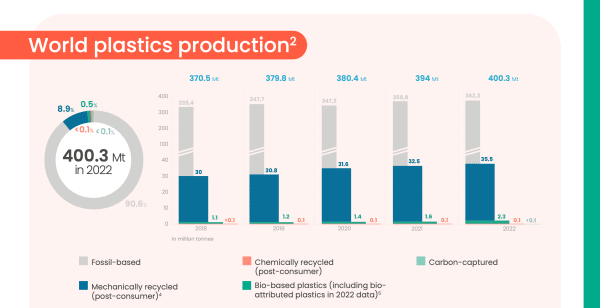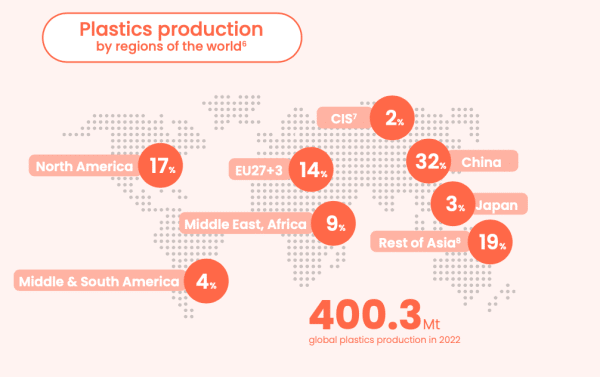New record: The proportion of circular plastics – i.e. those made from bio-based and recycled raw materials – reached a new high in 2022 with a production volume of 37.8 million tonnes. This is shown in the report “Plastics – the Facts 2023 by Plastics Europe. This means that the growth of circular plastics will exceed that of fossil-based plastics by a factor of 16. Almost 10 per cent of global plastics production is now based on circular raw materials, in Europe the figure is as high as 19.5 per cent.

It is clear to see that the transformation to a circular economy with plastics is progressing despite difficult market conditions. However, in order to harmonise economic growth and climate protection and to continue on this path, political decisions and investment incentives are needed in Germany and Europe. This applies to the national circular economy strategy, the EU Packaging Regulation, the Ecodesign Directive and the UN Convention on the Protection of the Marine Environment.
The European plastics industry is far ahead in the development of circular plastics technologies. Nevertheless, there is a risk of losing ground in global competition. This is because the share of global plastics production in Europe has halved within a decade, from 28 per cent in 2002 to 14 per cent in 2022, due to high energy prices, numerous regulations and limited access to raw materials. This development can increase dependence on imports and restrict European companies from investing in sustainability.

“We are on a promising path towards a climate-neutral circular economy, but without political support in the form of incentives and investment programmes, we are still progressing too slowly under the current competitive conditions,” Ingemar Bühler is certain. Targeted measures from the German government could help to facilitate investment in environmentally friendly technologies and promote the use of circular plastics. This legislative period will set the course for achieving the European climate and circular economy targets by 2050.
Header picture: © 2023 Plastics Europe AISBL